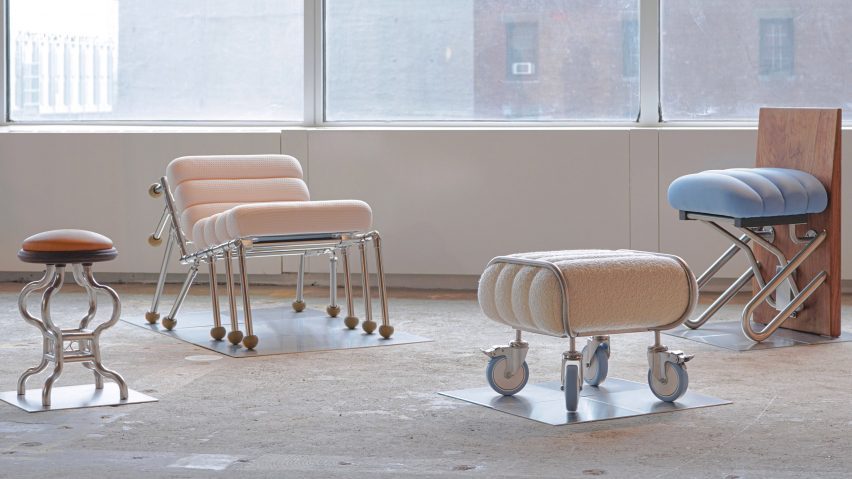
Nine highlights from Collectible design fair in New York City
A bench wrapped in pool noodles and lamps informed by New York's awnings were among the objects shown at the first US edition of the European design fair Collectible.
Collectible showcases furniture and objects and was previously held solely in Brussels before founders Clélie Debehault and Liv Vaisberg announced a New York City edition.
New York's fair was held at arts hub WSA in Downtown Manhattan and displayed objects from over 100 international designers and featured local curator Emily Marant as a director, as well as several guest curators.
The work was spread over two floors and organised into different sections. The fair was held on the third and fourth floors of WSA's skyscraper building, with the different booths and exhibitions occupying the whole of the building, which features tile floors and exposed mechanical systems.
A "logical step" for the fair
New York was a logical next step for Collectible given its "dynamic spirit", according to Debehault and Vaisberg.
"We have been wanting to expand Collectible to North America for a while," they told Dezeen. "We looked at many different cities with rich design communities and New York's dynamic spirit of constant creativity and innovation stood out to us."
"As we know, New York is never simply one thing, this city is a melting pot of varying cultures, ideas, and influences, thus creating a perfect foundation for creativity to thrive."
Exhibitions included pieces from local designers and studios such as Dong-Ping Wong, Hannah Bigeleisen and Studio S II and international counterparts including Golem and Max Radford Gallery.
"Combining Europe's narrative- and material-oriented design evolution with America's craftsmanship and fluidity across fields such as design, art, and fashion has proved to be a truly compelling mix," said the founders.
"We're looking forward to seeing what more the two scenes can learn from one another."
Read on for nine highlights from the show.
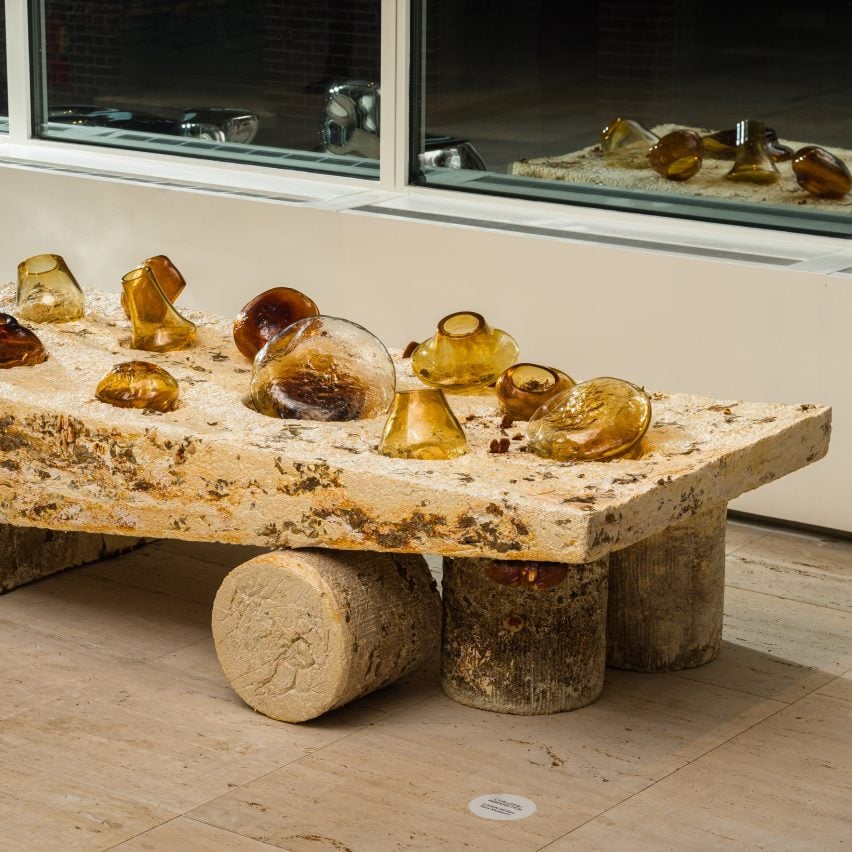
The Ephemeral Table by Fefostudio and Kamilla Csegzi
Local design firm Fefostudio and architect Kamilla Csegzi created a large table out of mycelium substrate and other organic waste, including paper and leaves.
A series of holes were carved out of the table's surface that were used as moulds to form a collection of amber-coloured glassware, which sits in various orientations on top.
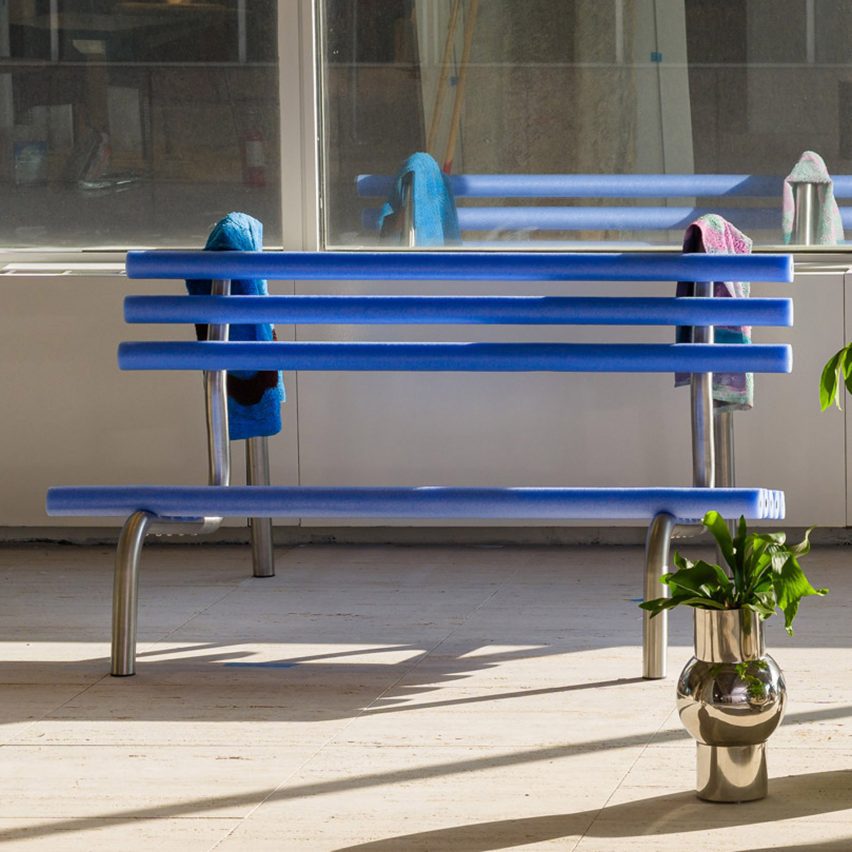
Lazy Swim Bench by Laura Dominici and Basil Schu
Austrian designer and artist Laura Dominici and Basil Schu collaborated on the Lazy Swim bench, which they made using a stainless steel frame and pool noodles.
The top portion of the frame is the exact proportions used for pool ladder railings, while the bottom half was stretched forward to create a seat.
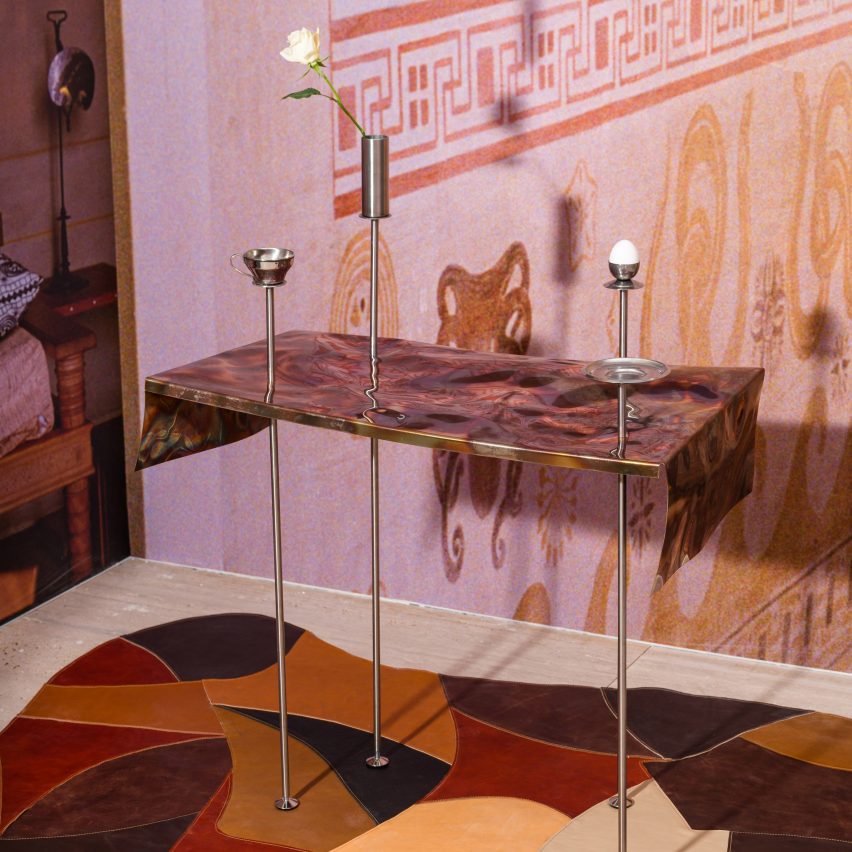
Domenica table by Federica Zama
Italian designer Federica Zama created the Domenica table, a small breakfast table topped with stainless steel rods that hold a hard-boiled egg, a vase, a teacup and a saucer.
Zama scorched the stainless steel top with an oxyacetylene torch, warping and colouring the metal with iridescent splotches to create a "colourful, fluttering tablecloth".
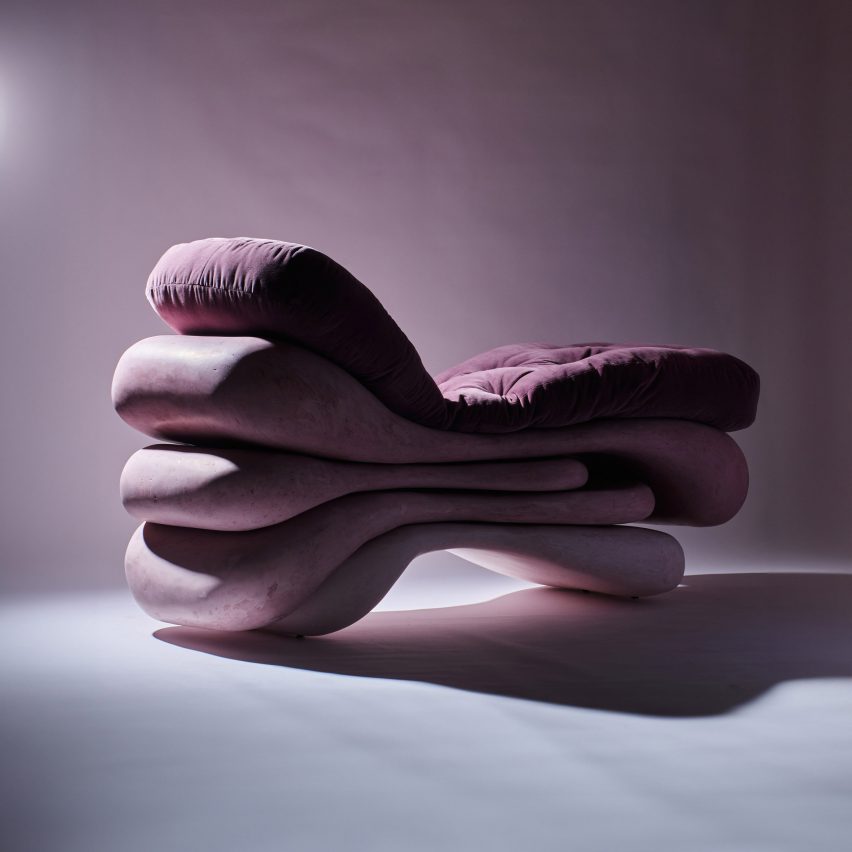
JoJo Chaise by Dean & Dahl
The JoJo Chaise by Gabriel and Brooke Anderson of New York studio Dean & Dahl was part of the booth for local gallery Tuleste Factory and consists of four amoeba-like layers of industrial plaster topped with a mohair cushion in ascending shades of purple.
"Drawing inspiration from the fluid, organic contours of the human body, the piece blurs the line between functional furniture and sculptural art," said the team.
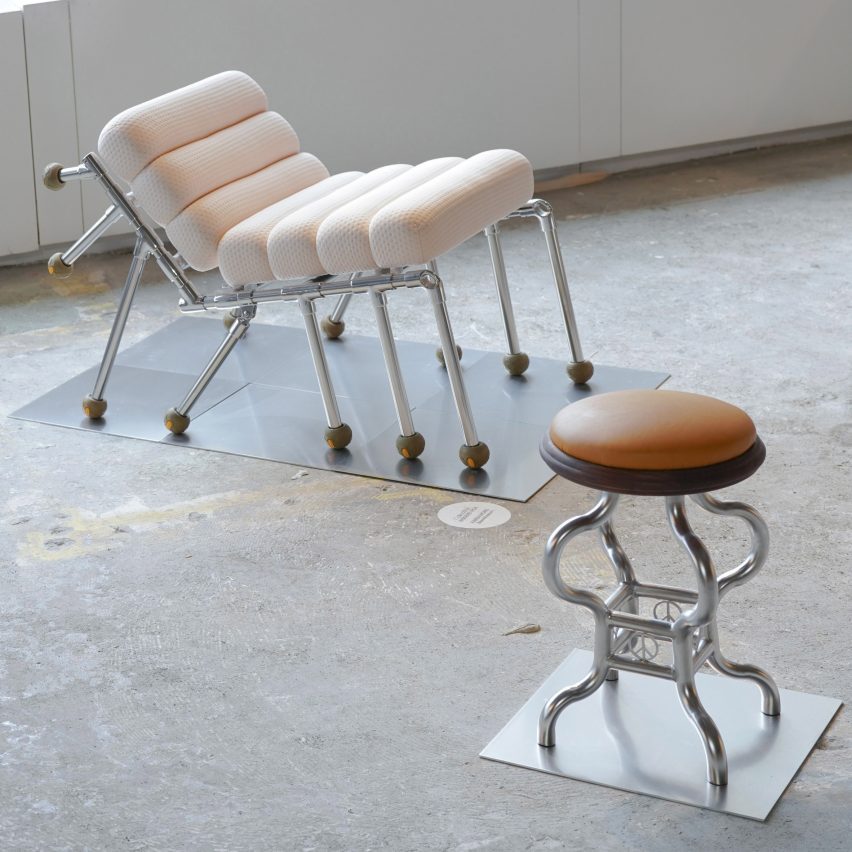
Palace Stool by Manifold
Yihan Chen and Fengyi Zhu of New York studio Manifold displayed four pieces of furniture made with stainless steel and aluminium frames topped with soft blue, pink, brown and creme cushions.
For the Palace Stool, the pair created a hand-bent and welded metal frame adorned with small peace and heart symbols and a leather seat to create silhouettes informed by visits to China.
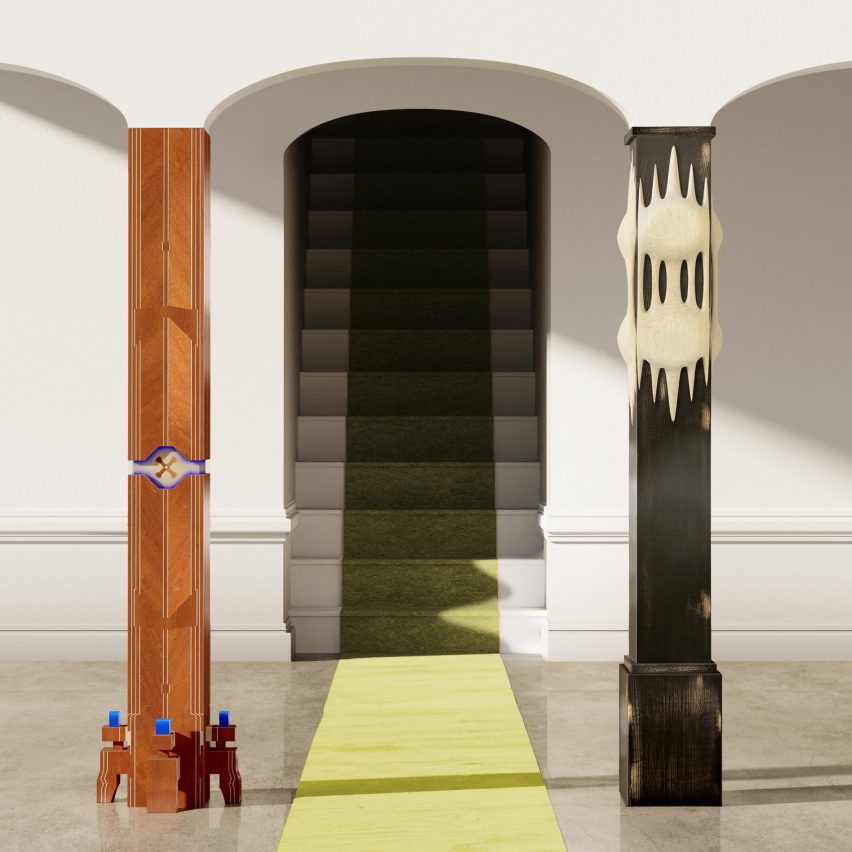
Untitled Column and Don't Wanna Know by NJ Roseti and Caleb Ferris
In a section curated by San Francisco-based studio Studio Ahead, New York-based designers NJ Roseti and Caleb Ferris created a pair of columns to "present their own interpretation of an architectural column".
Roseti's column juxtaposes "ornate, detailed craftsmanship of wood" with contemporary forms, while Ferris represents New York's energy and mystery with carved maple appliqués, following the designer's recent return to the city.
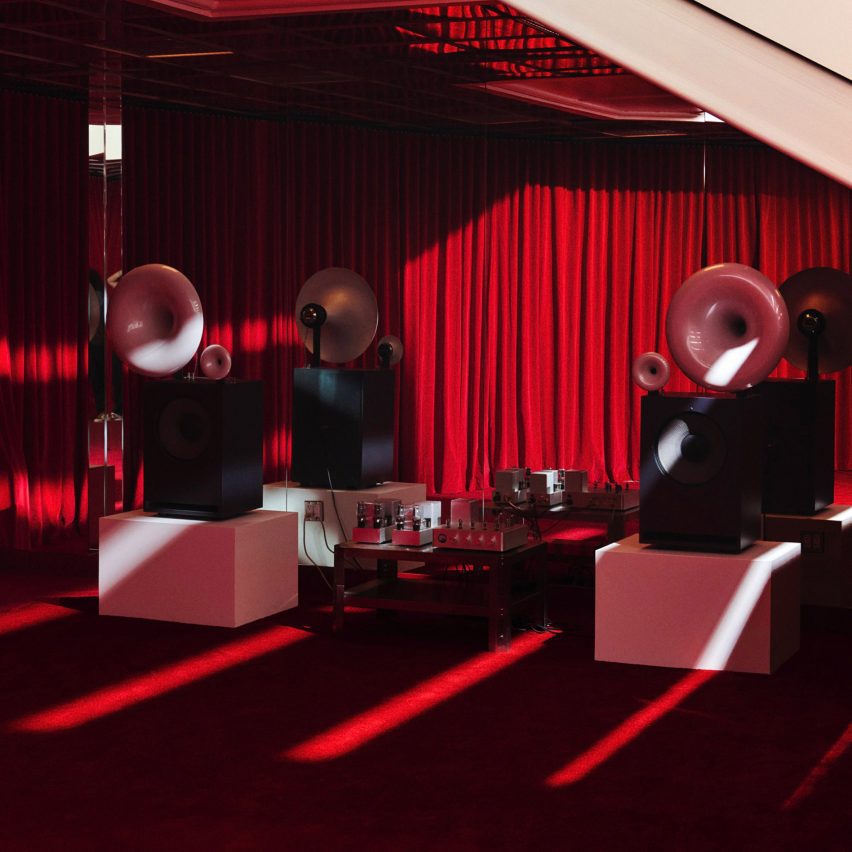
Speakers by Silence Please
Speaker design studio Silence Please showcased its distinctive speakers, which are amplified with "horns".
Its main exhibition was "completely analogue" and consisted of a vinyl player and rotary mixer surrounded by two blocks of speakers that deliver "stadium-sized sound" with "very low power".
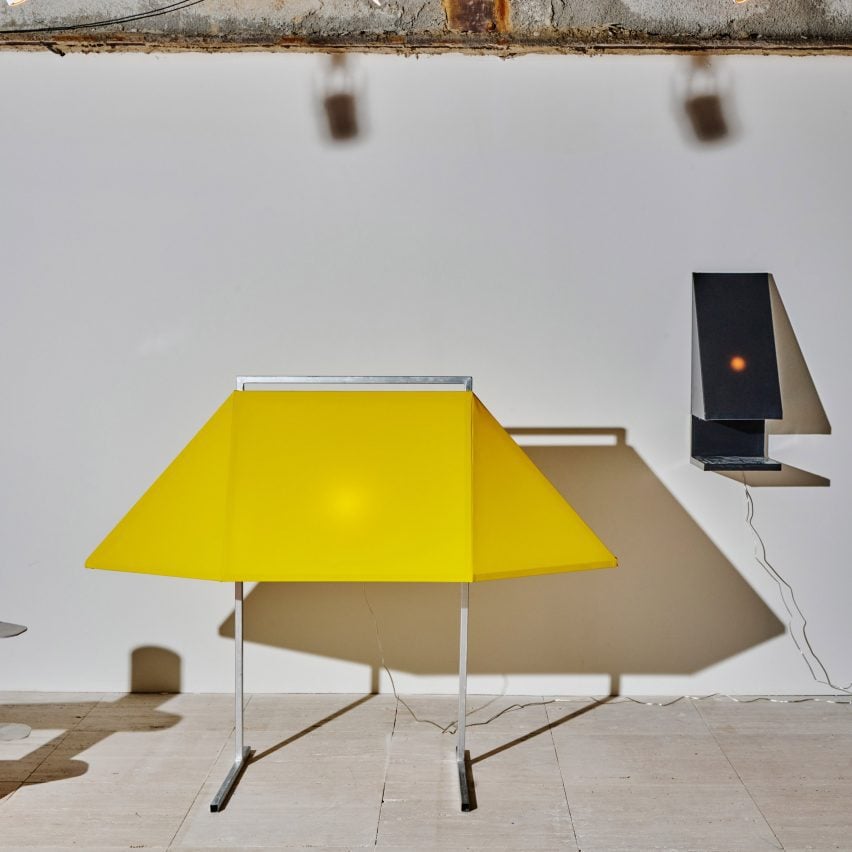
Kite lamp by Tang Badham
Shawn Tang and Sachio Badham of New York studio Tang Badham presented two lamps, each with geometric shades that reference the many awnings found throughout New York's Chinatown neighbourhood.
Standing waist high, the Kite lamp is made with an aluminium and steel frame with a bright yellow, vinyl covering. Alongside the Pine wall sconce, the pieces reflect a "delicacy and resilience" that the design studio strives to imbue throughout its work.
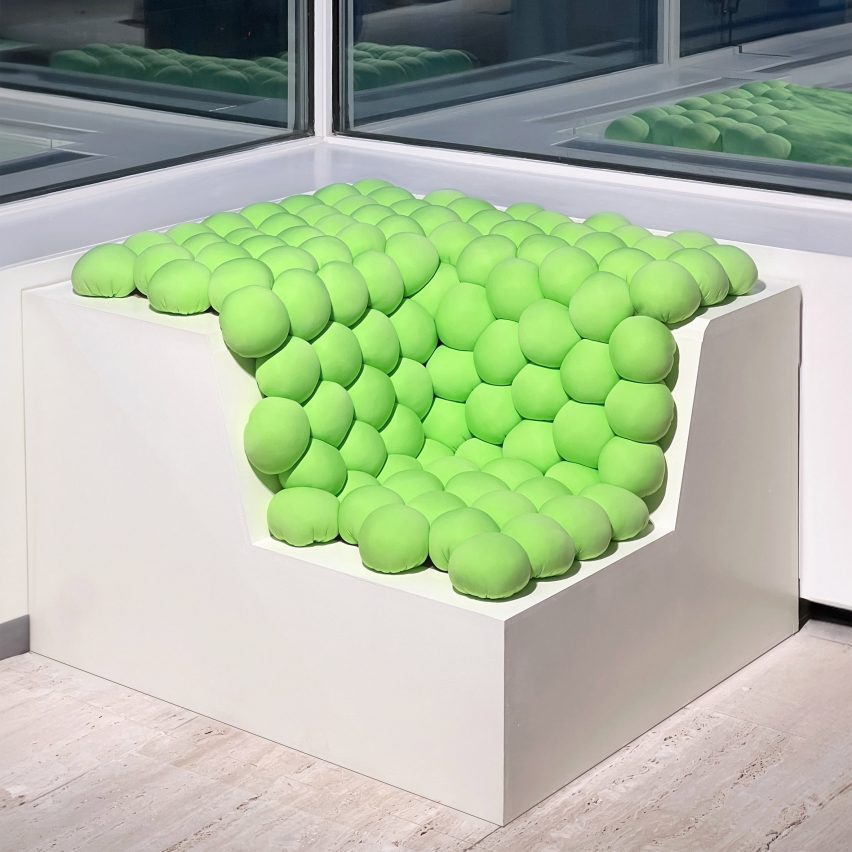
Amoreba by Golem
Billed as an "unconventional architectural upholstery surface treatment" this plush material can be shaped to fit on top of whatever surface.
It consists of a series of connected plush "balls" and Golem – founded by Ariel André – is also developing moveable tables with pegs to fit in the interstices.